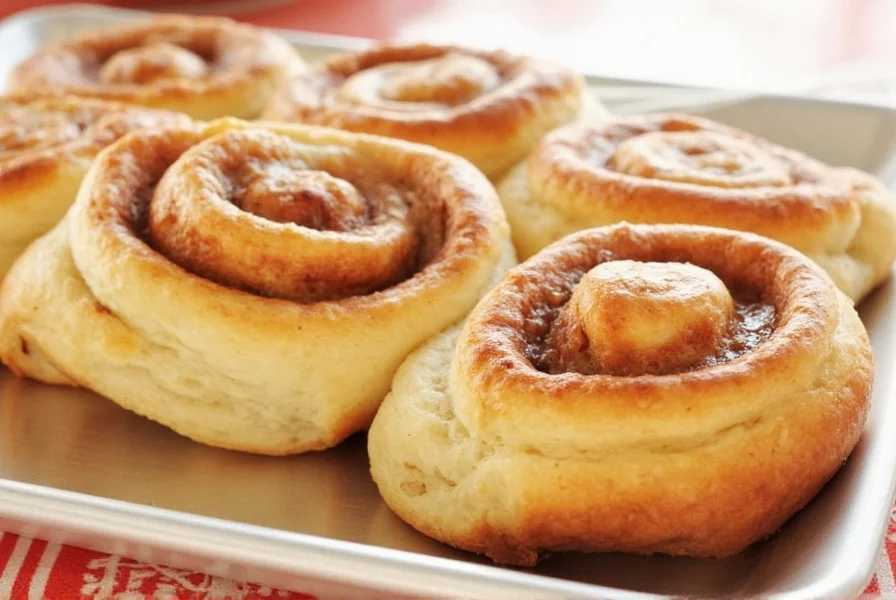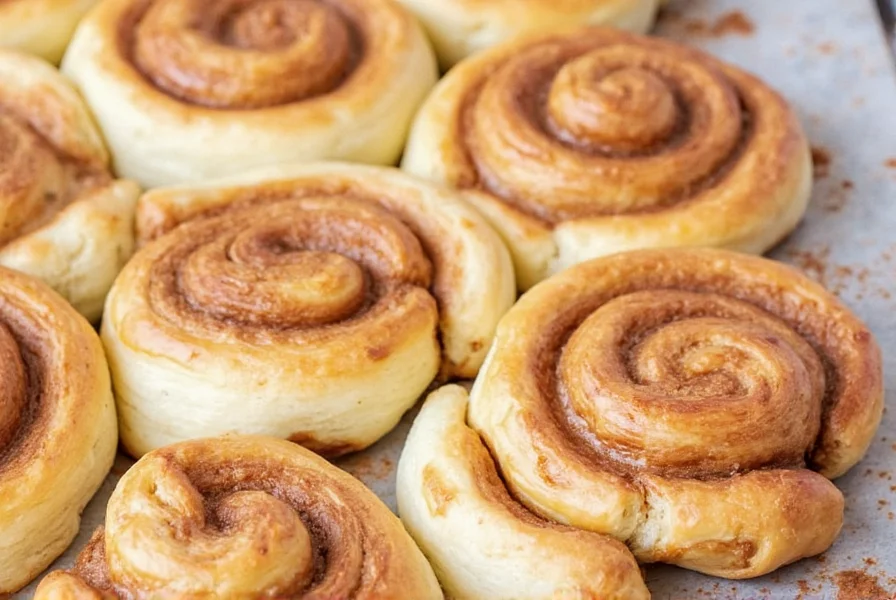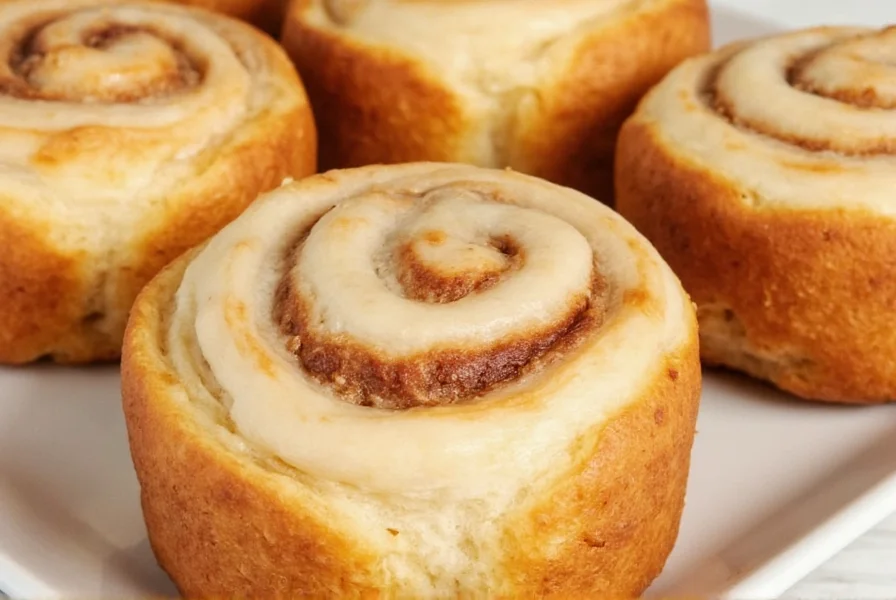When you're craving homemade cinnamon buns but short on time, puff pastry cinnamon buns offer the perfect solution. Unlike traditional yeast-based rolls that require hours of rising, this clever adaptation uses ready-made puff pastry for dramatically faster preparation while maintaining that signature swirl and rich flavor profile. The secret lies in the puff pastry's built-in layers, which create an exceptionally flaky texture when baked with the cinnamon filling.
Why Puff Pastry Works Perfectly for Cinnamon Buns
Puff pastry's unique structure—hundreds of delicate butter layers folded within the dough—creates an ideal foundation for cinnamon buns. As the pastry bakes, steam from the butter causes the layers to separate, resulting in that irresistible flakiness that complements the sweet cinnamon filling. This method eliminates the unpredictable yeast-rising process while delivering consistent, professional-quality results.

Essential Ingredients for Perfect Results
The beauty of this easy puff pastry cinnamon roll recipe lies in its simplicity. You'll need just eight basic ingredients, most of which you likely already have in your pantry:
| Ingredient | Quantity | Key Purpose |
|---|---|---|
| Store-bought puff pastry | 1 sheet (about 14 oz) | Provides flaky base structure |
| Unsalted butter | 6 tbsp, softened | Creates rich filling base |
| Granulated sugar | 1/2 cup | Sweetness foundation |
| Brown sugar | 1/2 cup, packed | Adds caramel notes |
| Cinnamon | 2 tbsp | Essential spice flavor |
| Vanilla extract | 1 tsp | Flavor enhancer |
| Powdered sugar | 1 cup | Icing base |
| Milk | 2-3 tbsp | Icing consistency |
Step-by-Step Preparation Guide
Follow these straightforward steps for how to make cinnamon buns with puff pastry that rival bakery-quality results:
- Thaw properly: Remove puff pastry from freezer and let thaw in refrigerator for 4-6 hours or according to package instructions. Never rush this process at room temperature.
- Prepare filling: Combine softened butter, both sugars, cinnamon, and vanilla in small bowl until smooth paste forms.
- Roll pastry: On lightly floured surface, gently roll thawed pastry into 12x16 inch rectangle, being careful not to compress layers.
- Spread filling: Evenly distribute butter-sugar mixture over entire surface, leaving 1/2 inch border around edges.
- Roll tightly: Starting from long edge, roll pastry into log, pinching seam to seal. Chill for 15 minutes to firm up.
- Slice carefully: Using sharp serrated knife, cut into 1.5-inch slices. Place cut-side down in greased baking dish.
- Bake perfectly: Bake at 400°F for 18-22 minutes until golden brown and fully puffed. Don't underbake.
- Finish with icing: Whisk powdered sugar with milk to desired consistency. Drizzle over warm buns.
Pro Tips for Flawless Puff Pastry Cinnamon Buns
Master how long to bake puff pastry cinnamon buns and avoid common pitfalls with these professional techniques:
- Chill before slicing: Firming the rolled pastry in the refrigerator prevents messy, squished rolls when cutting
- Don't skip the resting: Let baked buns rest 5 minutes before icing to prevent melting
- Perfect cinnamon sugar ratio: Use 4 parts sugar to 1 part cinnamon for balanced sweetness without overpowering spice
- Prevent soggy bottoms: Place parchment paper under buns rather than greasing the pan directly
- Test for doneness: Internal temperature should reach 190°F when properly baked
Common Mistakes to Avoid
Even experienced bakers encounter issues with puff pastry cinnamon buns vs traditional methods. Watch for these frequent problems:
- Rushing the thawing process: Microwaving or leaving at room temperature causes butter to melt prematurely, ruining the layer structure
- Overfilling: Excess filling leaks out during baking, causing burning and sticking
- Incorrect oven temperature: Too low prevents proper rising; too high burns before interior cooks
- Slicing with dull knife: Compresses the layers instead of making clean cuts
- Using cold ingredients: Butter must be properly softened to spread without tearing pastry
Creative Variations to Try
Once you've mastered the quick cinnamon roll recipe using store-bought puff pastry, experiment with these delicious twists:
- Nutty delight: Add 1/4 cup finely chopped pecans or walnuts to the filling
- Apple cinnamon: Layer thin apple slices over the filling before rolling
- Cheesecake swirl: Mix 4 oz softened cream cheese with half the sugar portion
- Chocolate drizzle: Melt 2 oz dark chocolate for additional topping
- Maple pecan: Substitute maple syrup for milk in the icing and add toasted pecans

Storage and Reheating Instructions
For make ahead puff pastry cinnamon buns that maintain freshness:
- Room temperature: Store in airtight container for up to 2 days (best texture)
- Refrigerator: Keep for 5 days; reheat in 300°F oven for 8-10 minutes
- Freezer: Wrap individual buns tightly; freeze up to 3 months
- Reheating: Thaw frozen buns overnight, then warm in 325°F oven for 12-15 minutes
- Reviving: Spritz with water before reheating to restore moisture
Frequently Asked Questions
Can I use frozen puff pastry without thawing?
No, you must properly thaw frozen puff pastry in the refrigerator before use. Attempting to work with frozen pastry will cause tearing and uneven layering. Thawing time typically requires 4-6 hours in the refrigerator—never at room temperature, which melts the butter layers prematurely.
Why did my puff pastry cinnamon buns come out flat?
Flat buns usually result from one of three issues: 1) The pastry wasn't properly chilled before baking, 2) The oven temperature was too low (below 375°F), or 3) You overfilled with cinnamon mixture causing leakage. Ensure your oven is fully preheated to 400°F and that you've allowed the shaped buns to rest in the refrigerator for 15 minutes before baking.
How do I prevent the filling from leaking out during baking?
To prevent filling leakage: 1) Leave a 1/2-inch border around the edges when spreading filling, 2) Don't overfill—use the exact measurements in the recipe, 3) Seal the seam well after rolling, and 4) Chill the rolled log for 15 minutes before slicing. The butter-sugar mixture should be thick enough to stay in place but soft enough to spread without tearing the pastry.
Can I prepare puff pastry cinnamon buns the night before?
Yes, you can prepare them ahead. After slicing, place the buns in your baking dish, cover tightly, and refrigerate overnight. In the morning, let them sit at room temperature for 20-30 minutes while your oven preheats, then bake as directed. This make-ahead method actually improves flavor development while maintaining excellent texture.
What's the best store-bought puff pastry for cinnamon buns?
Dufour Pastry Kitchens offers the highest quality frozen puff pastry with real butter and superior layering. If unavailable, look for Pepperidge Farm's all-butter version rather than their standard offering which contains vegetable shortening. Avoid any puff pastry labeled "phyllo dough" as it lacks the proper butter layers needed for optimal results in cinnamon buns.











 浙公网安备
33010002000092号
浙公网安备
33010002000092号 浙B2-20120091-4
浙B2-20120091-4